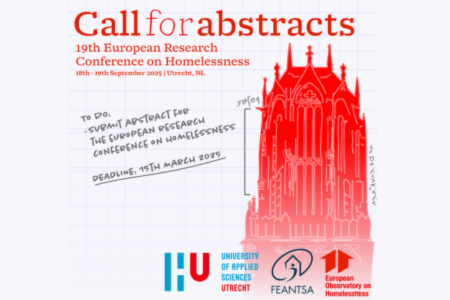Digital Inclusion for Homeless People and Homeless Service Providers: An Analysis of Benefits, Challenges, and Solutions

Read and download the full Policy Paper here
In February 2020, the European Commission published the Communication on ‘Shaping Europe’s Digital Future’, a document intended to set up the strategy for the European digital transition. The communication notes in its conclusions that “The digital transformation can only work if it works for all and not for only a few. It will be a truly European project – a digital society based on European values and European rules”.
Nevertheless, research shows that digital exclusion and social exclusion are strongly intertwined. A study commissioned by the Carnegie UK Trust found that, among others, those who are socially excluded are less likely to use and benefit from the internet. And, in addition, digital exclusion may exacerbate existing social exclusion.
With this policy paper, FEANTSA aims to contribute to existing efforts on digital inclusion for the most vulnerable, as well as to support European, national, and local authorities in ensuring that no one is left behind in the digital transformation of Europe. This decade will only truly be ‘Europe’s Digital Decade’ if every citizen in Europe, regardless of their economic or housing circumstances, can enjoy the same opportunities from the digital transition.
The paper is structured as follows:
- Introduction
- Background
- Benefits and outcomes of digital inclusion
- Challenges in digital inclusion of homeless people
- The use of ICT tools for professionals working with people in homelessness
- The perils of digital transition for people in homelessness
- The impact of COVID-19 on the use of digital tools
- Good practices to overcome the identified challenges in digitalisation for homeless people
- Conclusions and recommendations





